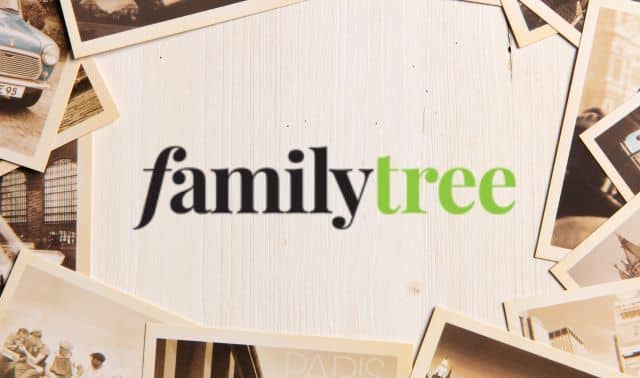Sign up for the Family Tree Newsletter Plus, you’ll receive our 10 Essential Genealogy Research Forms PDF as a special thank you!
Get Your Free Genealogy Forms
"*" indicates required fields
“Dear Diary…” Do you remember a childhood diary with a tiny lock and key? We recorded all sorts of observations, thoughts and experiences in the privacy of those pages. And, if you’ve ever studied an ancestor’s journal, you’ll know how valuable that written document can be in helping you understand times past.
Preserve diaries filled with youthful aspirations—or Grandpa’s wartime journal—with these archival best practices. We’ll also discuss how to think about journal preservation in a whole new digital way, and how to archive other forms of memories, such as social media posts.
1. Safely Store Old Journals and Diaries
Store the book away from heat and light inside an acid-free archival box on a closet shelf in your home. Most importantly, don’t store heirloom books in an unheated space like a garage, attic, or basement. Changing temperatures and humidity invite speedy deterioration, pests, and mildew. Support detached covers with four-flap book enclosures to protect fragile bindings from further damage. Avoid stacking books on top of each other and adding pressure to items at the bottom of the stack.
2. Record Your Own Experiences Using Apps
High-tech diarists are more apt to use a smartphone journal app locked down with a password than a padlocked paper diary. However, the goal remains the same—to record thoughts, memories, and everyday events. Choose from apps like Day One (Mac, iOS, Android) or Journey (Mac, Windows, iOS, Android, Chrome OS, Web) to easily jot down your daily experiences or add photos and social media posts.
Try out a few different journal apps to find one that suits your style and tech-savvy. A basic diary also doesn’t require a lot of features. Look for an intuitive entry process, automatic reminders (so you remember to use it!), and the ability to export in a common format such as PDF or text.
3. Save Social Media Posts
Dedicated social media users are already documenting everyday life on Facebook, Twitter and Instagram. The Momento app (iOS) imports social media feeds to create a searchable digital diary without additional work from the writer. Extra features such as reminders, timelines, summaries, and automatic cloud backup move journaling into the digital age. Momento encourages sharing with plain text export and the option to share photos and summaries on social media or via email or message apps.
4. Give Diaries or Bullet Journals as Gifts
Help create tomorrow’s heirlooms by gifting special children in your life with their own personal journal. Kids love books with locks and keys, along with a colorful gel-pen or set of colored pencils. Teens like the great colors and generous pages of larger-format books made by Moleskine and Leuchtturm. Although today’s students might be more proficient with a keyboard, there’s a growing fascination with old-school handwriting using modern bullet-journal techniques.
5. Scan Journals and Diaries
Preserve diaries and journals by going digital. Create a copy of your ancestor’s diary by scanning (at 300 dpi) or photographing the cover and inside pages. View the digital images to discover clues to your family history. Use the image zoom and contrast adjustment features of your image viewer to enhance old handwriting and faded ink.
Remember that a personal journal is not infallible. People often mis-remember dates or events. Therefore, you may find conflicting information. Use it like any new genealogical data—transcribe, analyze and correlate the information before adding it to your family tree.
6. Turn Your Journal into a Photo Book
Share an old family diary with other relatives! Create a reproduction edition using digital images of the cover and inside pages. First, scan each page at 600 dpi in full color. Use TIFF format as archival copies and convert the images to JPG to upload for photo books, email, and web.
Next, upload JPG images to a photo book site like Shutterfly.com or Mixbook.com and select a book similar in size and shape to the original. Recreate the diary with digital images, using scanned images of blank pages as needed to preserve the original page order.
Finally, add a family tree or a brief biography of the diary’s author to give the book more context for your readers. Most online photo book services offer a share feature that makes it easy to invite relatives to view the book and order their own copies.
Related Reads
A version of this article appeared in the September 2019 issue of Family Tree Magazine.
FamilyTreeMagazine.com is a participant in the Amazon Services LLC Associates Program, an affiliate advertising program designed to provide a means for sites to earn advertising fees by advertising and linking to Amazon.com and affiliated websites.
ADVERTISEMENT









